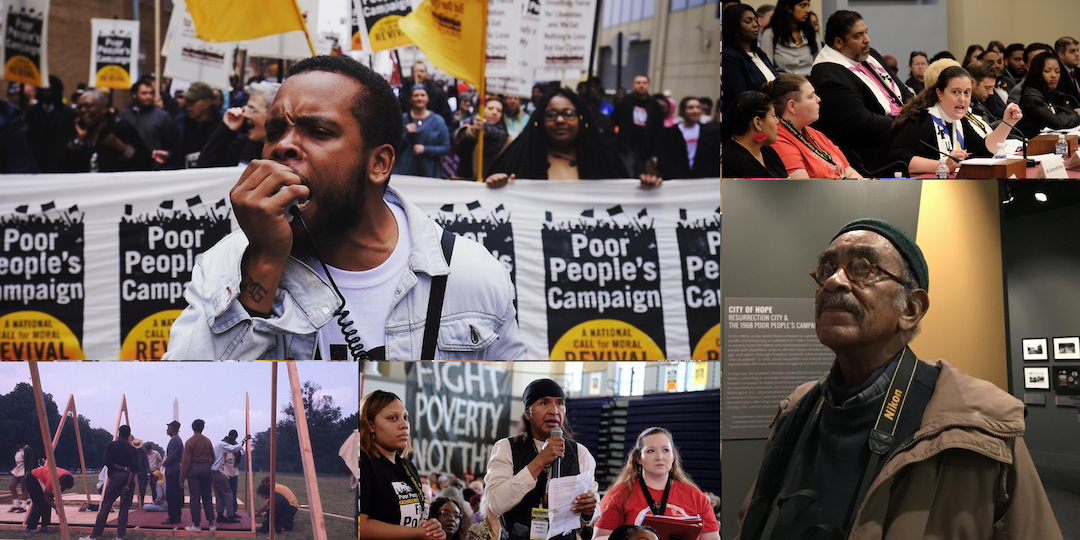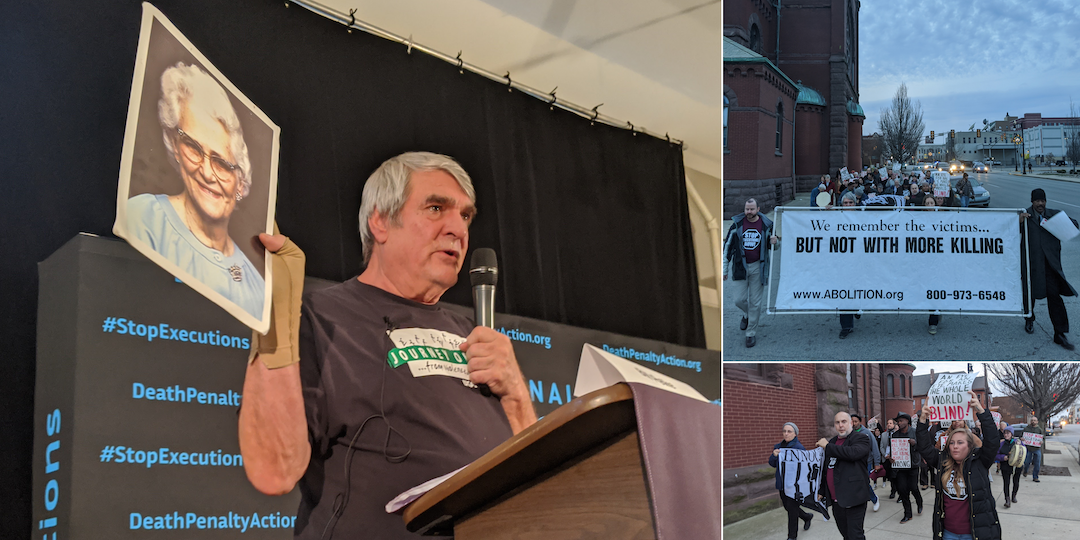Shifting the Narrative: Lessons Learned
Advocates have long understood the centrality of storytelling to building power, as well as winning both short term victories and long-term systemic change. Both research and lived experience consistently show that stories and language play a significant role in shaping our views of the world and, ultimately, the policies we support. These “big stories” or “narratives” about the world around us can either be a wind in our face, making advances in social justice extremely difficult or impossible, or they can be the wind in our sails, propelling us forward to victories and new frontiers of liberation.
Over the last several years, many social justice leaders have begun to actively engage in strategies designed to shift, counter, or replace prevailing narratives about social issues, the economy, our history, and other stories that shape and influence culture and policy.
But exactly how does narrative shift success happen? Are there key factors which organizers can learn and replicate? Or are they a mixture of luck and strategy?
The Opportunity Agenda is a social justice communications lab dedicated to helping movement leaders use their ideas to improve our world. We conducted a six-part study to look closely at a range of key narrative shifts over the past 70 years to answer those questions.
In Shifting the Narrative, our research and work set out to identify essential and replicable elements of past successful narrative change efforts by engaging in deep research of thousands of documents, and interviewing a diverse cadre of leaders who played a critical role in making those shifts happen, as well as academics and journalists.i
To this end, we chose the following six examples to study, from long-term efforts that resulted in shifts to both cultural thinking and policy, to shorter-term, focused campaigns. For most, we studied efforts that resulted in social justice wins or improvements. In one case, our examination of narratives related a governmental role in supporting economic justice, we looked at how the prevailing narrative shifted against us:
1. Narrative Shift and the Death Penalty. Shifting public understanding of the role of innocence in a campaign to eventually end the use of the death penalty.
2. Narrative Shift: From the War on Poverty to “Ending Welfare as We Know It.” Examining the conservative response to New Deal programs enacted to eliminate persistent poverty.
3. Documentary Film and The Blackfish Effect. Exploring the role of a documentary film in public perception of the treatment and ethics of keeping animals in captivity.
4. Sexual Violence, The #MeToo Movement, and Narrative Shift. Studying the recently amplified campaign designed to bring attention to long-standing issues of sexual harassment and assault.
5. Gun Politics and Narrative Shift. Tracking the long-term narrative-shift effort to enact gun control measures.
6. Narrative Shift and the Campaign to End Racial Profiling. Moving from the “bad apple cop” to examining systemic racism.
Lessons Learned
At The Opportunity Agenda, we define narrative as a Big Story, rooted in shared values and common themes, that influences how audiences process information and make decisions. Narratives are conveyed not only in political and policy discourse, but also in news media, in popular culture, on social media, and at dinner tables across communities.
Here are key lessons learned or reinforced by Shifting the Narrative followed by the specific studies which best illustrate each lesson:
- Narrative shift transcends messaging shifts and take longer. Narratives are not shortterm, single-audience-focused messages, but rather larger stories that often transcend any one campaign for policy change. Importantly, narratives shape the way audiences understand the context in which campaigns for policy change take place.For instance, in the case of the shift in public perceptions of gun control efforts in Virginia, the narrative challenge was not overcoming a lack of public support for gun control policies. In this case, most of the public supported gun control legislation but that public support was not resulting in policy change. The barrier to victory was the narrative that the National Rifle Association (NRA) was a credible and insurmountable obstacle to any such legislation. In the context of that narrative, efforts to pass gun control legislation died on the vine despite having public support. By intentionally undermining the credibility of the NRA by telling stories of mismanagement and incompetence over time, while also running pro-gun control candidates who won in the region, Virginia activists were able to weaken the prevailing narrative of the NRA being all powerful. The shift helped gun control supporters to see that Goliath could be defeated and energized them to introduce and pass legislation.Case Studies to Reference: Narrative Shift and the Death Penalty; Narrative Shift: From the War on Poverty to “Ending Welfare as We Know It; Gun Politics and Narrative Shift; Narrative Shift and the Campaign to End Racial Profiling.
- Narrative shift efforts are difficult to evaluate. Because narratives happen over long periods of time and may not be focused on one specific outcome, evaluating the causality between a successful narrative shift and the strategies designed to shift it, can be particularly challenging. Over the long-term, changes in storytelling and language happen amidst an ever-changing landscape of environmental factors like political developments, economic trends, demographic shifts, cultural developments, and so on. Under these circumstances, narrative shift strategies are constantly affecting, and being affected by, the world around them. Because of this, pinpointing the precise moments in time when narrative shifts have happened is nearly impossible.Also complicating evaluation efforts is the fact that the field of narrative strategy research is relatively new. Therefore most, if not all, of the leaders we interviewed did not necessarily consider themselves to be engaged in a “narrative strategy” at the outset of their work. Narratives can often outwardly appear static for many years and then can appear to suddenly shift over a short period of time. This can make it difficult for people to observe the change they are making in the moment or to know precisely which activities are serving as the catalyst for change as they happen. Additionally, the effects of campaigns for social change often intersect with one another across issue areas. Because of this, social change leaders who are working in one issue area may inadvertently be playing a significant role in shifting narratives in areas they are not setting out to impact.Case studies to reference: Narrative Shift and the Death Penalty; Narrative Shift: From the War on Poverty to “Ending Welfare as We Know It; Gun Politics and Narrative Shift.
- We must tell our own affirmative story, not just react to bad, dominant narratives. The investment in long-term thinking is crucial to any movement’s engagement in narrative shift. With this mindset, the challenge of shorter-term setbacks or unexpected headlines becomes how to build them into our own affirmative narrative, not how to deal with each individually. The latter often results in the outlay of significant time and resources to play a scattered defensive role instead of using each moment to bolster our longterm, affirmative story. In the case of the death penalty, advocates found themselves on the defensive throughout the 1980’s as media coverage about, and thus the public’s fear of, crime increased and intensified. Activists were primarily engaged in a series of legal fights, generating legal arguments, and gathering data as their strategy to challenge the death penalty. Advocates then realized that regardless of the number of court cases won, they had no hope of ending the death penalty amid a dominant narrative of increased crime and fear – they had a narrative problem on their hands. If activists could not get public opinion on their side, proponents of the death penalty would find new ways to pass laws enshrining the policy despite the mounting individual legal victories. By moving to a pro-active narrative strategy focused activists’ efforts on racial disparities and unfairness in its application, advocates were able to increase the public’s unease with the death penalty more than the previous strategy of amassing a string of court cases did.Case Studies to Reference: Narrative Shift and the Death Penalty; Sexual Violence, The #MeToo Movement, and Narrative Shift; Narrative Shift and the Campaign to End Racial Profiling.
- Social justice narratives must not shy from discussions of race. If those of us committed to social justice, fairness and true opportunity do not talk about race, we cede that conversation to the other side. For example, for a long time, advocates working on antipoverty policies did not address the racialization of poverty in a unified way, leaving the opponents of public benefits nearly unchallenged to use race in their drive to “end welfare as we know it.” While people did call out the “welfare queen” trope, it successfully persisted nonetheless without a directed, purposeful conversations about the historic and systemic causes of poverty and racial disparities in income and wealth. But those working on criminal justice reform – in the cases of racial profiling and the death penalty – realized they had to clearly discuss racial biases and disparities. If they did not, the myth of “Black criminality” would continue to successfully dominate conversations and meaningful, equitable reform would be out of reach.Case Studies to Reference: Narrative Shift and the Death Penalty; Narrative Shift and the Campaign to End Racial Profiling; Narrative Shift: From the War on Poverty to “Ending Welfare as We Know It”
Moving Forward
There are approaches that those seeking to engage in narrative change strategies for justice can adopt to smooth the way for success.
First, narrative work takes long-term investment and a commitment to collaboration. Projects seeking to popularize a slogan or secure only an isolated policy win can be a part of a narrative strategy, but only if they are developed and executed in collaboration with other projects that build toward shared narrative goals. This means that spaces for those engaging in narrative work to collaborate and strategize are a much needed, and yet currently rare, resource.
Second, the development of frameworks and evaluation strategies that utilize well-defined benchmarks will be important contributions to the future of the field. The more that social justice communicators can agree on what comprises a narrative, and where we think we can see success along the path, the better we will be able to craft successful and collaborative narrative change strategies.
That said, while a shared agreement of form and definitions among those expressly inhabiting the young and growing field of narrative strategy are important, it is also crucial that a broad range of people can see themselves as part of any strategy. In the cases we studied, many people were engaging in narrative strategy who would never call it that. Our terms and approaches need to be accessible to people who do not see themselves as “narrative strategists,” or “communications experts.” We should find ways to make the case for the practical importance of narrative strategy to attract key collaborators and be effective in crafting strategies with them, while avoiding a reliance on jargon, formulas, or unwieldy definitions.
Finally, we need to tell the stories we want to tell rather than chasing behind current prevailing narratives just to argue with or shift them. By analyzing their opponents’ strengths and weaknesses, and then telling their own, affirmative story, we saw a wide range of advocates reshape the prevailing narrative in ways that put their goals and policies for justice on stronger ground. Using long range, affirmative narrative strategies, we can weaken the power of antijustice narratives and propel our campaigns toward victory.
i “Shifting the Narrative.” The Opportunity Agenda. Published 2021. https://opportunityagenda.org/messaging_reports/shifting-the-narrative/






